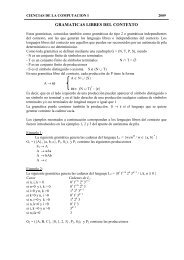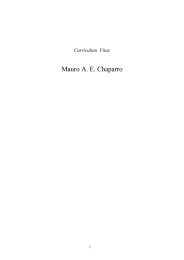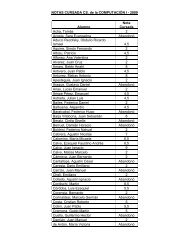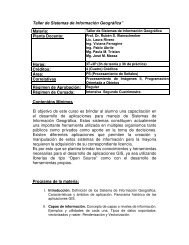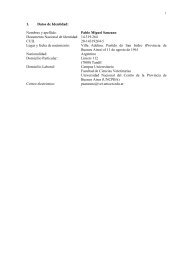Libro de Resúmenes / Book of Abstracts (Español/English)
Libro de Resúmenes / Book of Abstracts (Español/English)
Libro de Resúmenes / Book of Abstracts (Español/English)
You also want an ePaper? Increase the reach of your titles
YUMPU automatically turns print PDFs into web optimized ePapers that Google loves.
Resumenes 106<br />
Pastoral agriculture occupies around 20 % <strong>of</strong> the land surface <strong>of</strong> the<br />
globe, and is directly or indirectly responsible for meeting the economic and<br />
material needs <strong>of</strong> a substantial proportion <strong>of</strong> its human population. This<br />
importance is similar for Argentinean ruminant productive systems, which<br />
are primarily un<strong>de</strong>r grazing conditions. In such systems, herbage intake<br />
(originated in the plant / animal interface) is the main <strong>de</strong>terminant <strong>of</strong> the<br />
animal response. Mathematical mo<strong>de</strong>ls has shown to be and important<br />
research tool both for un<strong>de</strong>rstanding and prediction. Most animal grazing<br />
mo<strong>de</strong>ls require in advance measures or estimates <strong>of</strong> animal intake and feed<br />
quality to predict animal performance. An intake mo<strong>de</strong>l linked to an animal<br />
performance mo<strong>de</strong>l are the key components for whole-farm simulation.<br />
Mo<strong>de</strong>l calibration and evaluation is not a straightforward issue as individual<br />
herbage and maize grain intake are not always readily available. The<br />
objective <strong>of</strong> this study was, as part <strong>of</strong> a combined field and mo<strong>de</strong>lling<br />
experimentation project, to <strong>de</strong>velop and to evaluate a beef cattle finishing<br />
mo<strong>de</strong>l for predicting herbage intake and animal performance un<strong>de</strong>r different<br />
herbage and maize grain allowances (g feed . g live weight -1 ).<br />
Different component from the literature were selected, adapted and<br />
calibrated to <strong>de</strong>velop a dynamic and <strong>de</strong>terministic intake mo<strong>de</strong>l linked to an<br />
animal performance mo<strong>de</strong>l. Two grazing experiments were carried out (88<br />
animals) where herbage intake, maize grain intake (n-alkane and 13C<br />
markers) and liveweight gains were individually recor<strong>de</strong>d in free grazing<br />
beef cattle fed a combination <strong>of</strong> herbage allowances and maize grain<br />
allowances.<br />
From the statistical evaluation can be conclu<strong>de</strong>d that the mo<strong>de</strong>l in its<br />
present state <strong>of</strong> <strong>de</strong>velopment can reproduce experimental information un<strong>de</strong>r<br />
a wi<strong>de</strong> range <strong>of</strong> grazing conditions (including maize grain supplementation)<br />
with acceptable accuracy and without bias.



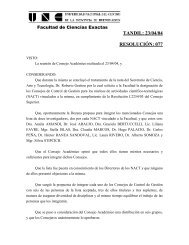
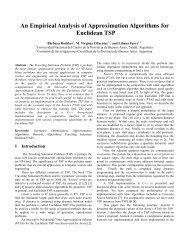
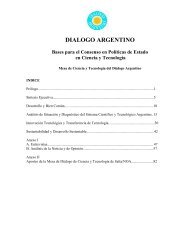
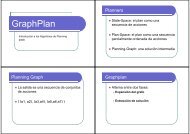
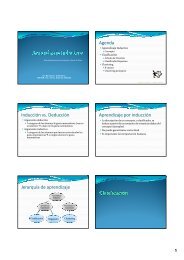
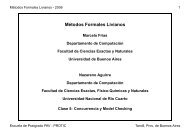
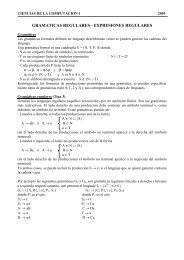

![Clase 13 [pdf]](https://img.yumpu.com/19616969/1/190x245/clase-13-pdf.jpg?quality=85)

